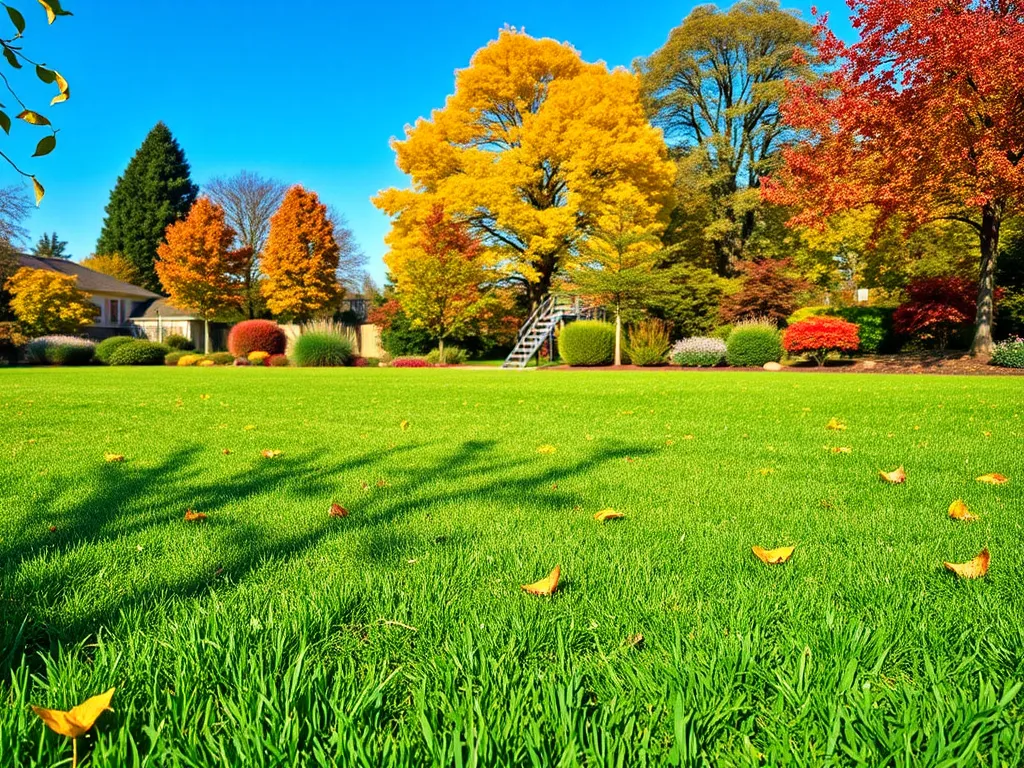Understanding Seasonal Changes and Mowing Frequency

Seasonal Changes and Their Impact on Mowing Frequency
Understanding seasonal changes is vital for lawn care enthusiasts and professionals alike. Seasonal changes and their impact on mowing frequency greatly influence not only the aesthetics of a lawn but also its health. Different seasons bring varying temperatures, weather patterns, and types of grass that require different care routines. Recognizing these factors can promote a greener, healthier lawn throughout the year.
In spring, temperatures rise and grass begins to grow vigorously. This is a crucial time for homeowners to adjust their mowing practices to keep the lawn healthy and attractive. Regular mowing in spring helps establish a strong root system and encourages denser growth. The frequency of mowing during this season may increase significantly depending on local weather conditions and the type of grass.
As summer arrives, the dynamics of mowing frequency change once again. During the hotter months, grass may enter a period of dormancy, especially in regions where temperatures soar. Homeowners may find themselves mowing less frequently to promote deeper root growth and reduce stress on the grass. The frequency may vary based on rainfall patterns, grass types, and regional climate differences.
In fall, the focus shifts to preparing the lawn for winter dormancy. Seasonal changes and their impact on mowing frequency become evident as growth rates slow down. Homeowners should gradually reduce mowing frequency while ensuring the lawn is well-maintained. Raking leaves and aerating the soil are essential tasks that also affect mowing schedules during this transitional phase.
Winter brings a halt to grass growth in most regions, leading to minimal mowing needs. However, understanding how seasonal changes affect the upcoming growth phase in spring is crucial. Winter maintenance practices, such as clearing debris and avoiding foot traffic on frosty grass, set the stage for a robust lawn when growth resumes with warmer temperatures in spring.
consistent winter grass maintenance helps prepare your lawn for the upcoming spring, ensuring robust growth as temperatures rise.
Effects of Weather on Grass Growth
Temperature fluctuations throughout the year greatly impact grass growth rates. In spring, warm temperatures stimulate growth, leading to increased mowing frequency. Heatwaves in summer can cause stress, causing some grass varieties to slow down or enter dormancy. Cooler temperatures in fall signal a decrease in growth, impacting the need for mowing as the lawn prepares for winter.
implementing effective summer mowing tips can significantly enhance your lawn's health and appearance during those hot months.
Rainfall patterns also play a significant role in grass health. Adequate rainfall promotes healthy growth, while dry spells may lead to stressed grass that requires less frequent mowing. Soil moisture is critical, especially during hot months when evaporation is high. Monitoring rainfall and adjusting mowing frequency accordingly can lead to a flourishing lawn.
Sunlight duration affects grass health significantly. Longer daylight hours in spring and summer contribute to more robust growth, requiring more frequent mowing. Conversely, shorter days in fall and winter signal a decrease in growth. Therefore, understanding sunlight exposure is essential for determining mowing frequency throughout the seasons.
proper seasonal lawn care is essential for maintaining a vibrant and healthy garden throughout the changing months.
Seasonal Lawn Care Tips
In spring, the best mowing practices include setting the mower blades higher to avoid stressing young grass. Mowing at the right height encourages deeper root development and reduces the risk of disease. Keeping up with mowing frequency as growth accelerates is essential for achieving a lush lawn.
During summer, mowing frequency adjustments may be necessary as temperatures rise. It is advisable to raise the mower height to encourage deeper root growth and retain soil moisture. Mowing during cooler parts of the day, such as early morning or late evening, can also reduce stress on the grass and promote healthy growth.
Fall preparation for winter dormancy involves gradually reducing mowing frequency as grass growth slows. Raking leaves is essential to prevent smothering the grass and allows for proper air circulation. Additionally, aerating the lawn in fall can promote healthy growth when spring arrives.
Types of Grass and Seasonal Adaptability
Understanding the difference between cool-season and warm-season grasses is critical for determining mowing needs. Cool-season grasses thrive in spring and fall, requiring frequent mowing during these periods, while warm-season grasses grow best in summer, necessitating a different mowing schedule.
Different grass types have unique mowing requirements. For instance, fescue needs regular mowing in spring and early summer, while Bermuda grass requires more frequent mowing during peak summer growth. Knowing the specific needs of the grass type cultivated can enhance lawn care efficiency.
Seasonal growth peaks for different grass types should also dictate mowing frequency. Cool-season grasses tend to peak in spring and fall, while warm-season grasses typically exhibit growth spurts in summer. Homeowners should align their mowing schedules with these natural growth patterns to ensure a healthy and vibrant lawn.
Impact of Mulching on Seasonal Mowing
Mulching grass clippings can provide numerous benefits, such as returning nutrients to the soil and reducing the need for additional fertilizer. Effective mulching practices can also cut down on mowing frequency, as the clippings help retain moisture and encourage healthy grass growth.
How mulching affects mowing frequency is evident in how it enhances lawn health. Mulched grass clippings break down quickly and provide a natural fertilizer, promoting quicker growth. Consequently, homeowners may find themselves needing to mow less frequently while maintaining a healthy lawn.
Seasonal considerations for mulching practices include adjusting the height of the mower blades based on growth rates. For example, in spring when growth is vigorous, homeowners can mow more frequently and return clippings to the lawn, while in summer, they may choose to mow less often to avoid stressing the grass.
Regional Variations in Mowing Frequency
Mowing frequency adjustments by climate zone are crucial for maintaining a healthy lawn. In cooler regions, the growing season is shorter, leading to less frequent mowing, whereas warmer climates experience longer growth periods requiring more frequent maintenance.
The impact of local weather conditions on mowing frequency can lead to variations even within the same region. Periods of excessive rain may necessitate more frequent mowing, while drought conditions may allow for longer intervals between mows, adapting to the grass’s needs accordingly.
Seasonal trends in different geographic areas highlight the importance of understanding local climate patterns. Homeowners in northern areas may face longer periods of dormancy, while southern homeowners enjoy extended growth seasons. Recognizing these regional differences is key to optimizing mowing frequency for a thriving lawn.
